It felt like we’d been staring at each other for a good twenty minutes before he ran off into the Superior National Forest. In reality, it was probably only a few minutes, maybe less. But it was long enough to take in every detail of this beautiful creature. It was one of those experiences I’ll never forget. Wolf sightings are rare in the arrowhead region of Minnesota. While you might not come face-to-face with one like I did that summer afternoon on the Gunflint Trail, if you pay attention, you’ll start to see tracks and hear their midnight choruses everywhere you go. Although wolves aren’t considered a threat to humans, there are a few things to keep in mind. Keep reading to learn the must-know wildlife safety tips for your next Northeast Minnesota camping trip.
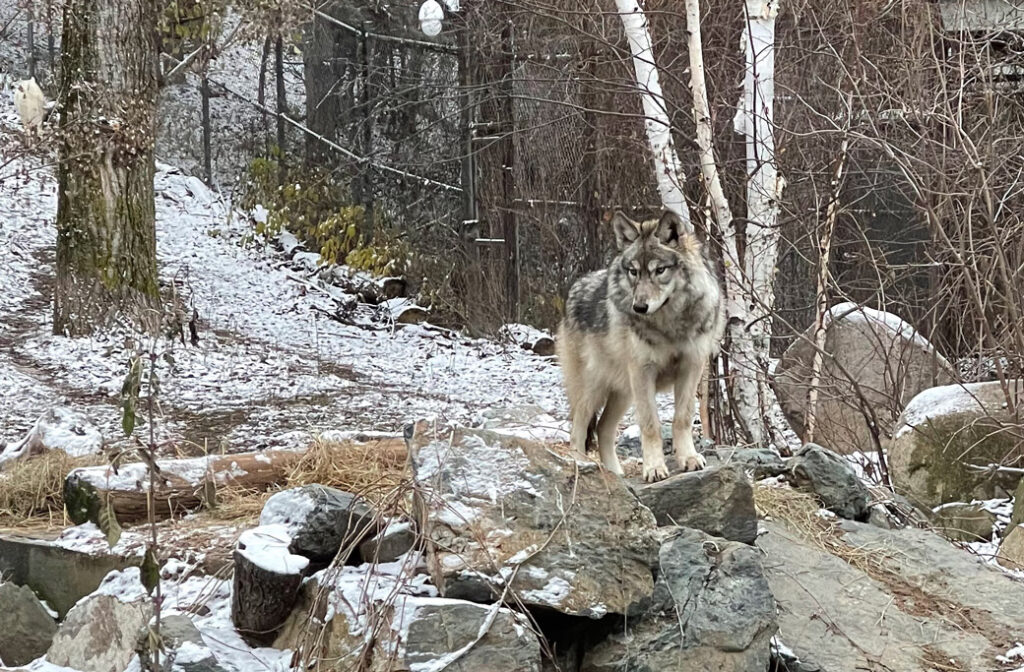
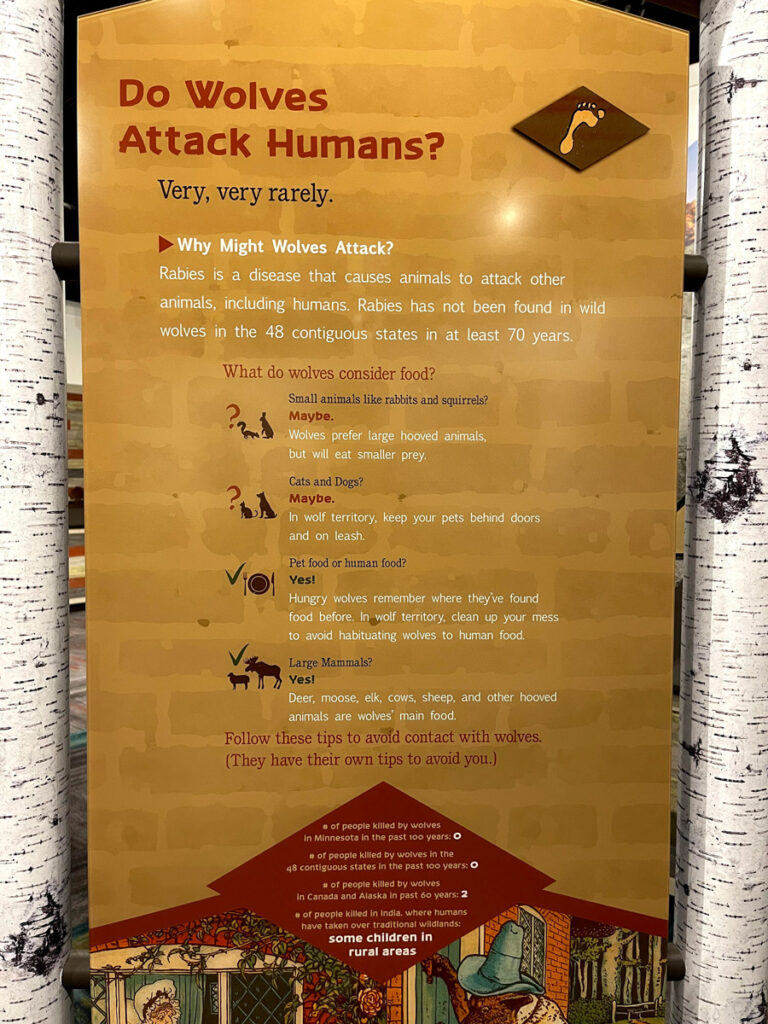
This is the second article in a two-part series on wildlife safety in the arrowhead region of Minnesota. As I shared in the first article about bears, how I deal with wildlife—specifically wolves and bears—is one of the most common questions I get about the great outdoors. While I promise to offer you useful tips on staying safe if wolf country, I’ll also share stories about some frustrating wildlife encounters you might not have considered.
From Little Red Riding Hood to The Three Little Pigs, wolves get a bad rap. In North America, wolf attacks on humans are remarkably rare. And many researchers agree that this keystone species is an essential part of the ecosystem. Yet, wolves remain a nuanced and controversial topic. While not considered a threat to humans, there have been reports of wolf attacks on livestock and pets. So it’s especially important to brush up on wildlife safety if you’ll be traveling through Northeast Minnesota with a pet.
If you read the last article about bears, you’ll find that many of the rules for wolves overlap. Keep a clean camp, don’t burn leftover food or trash, secure your garbage by hanging it or using a bear-resistant container, and never allow your pets to roam free.
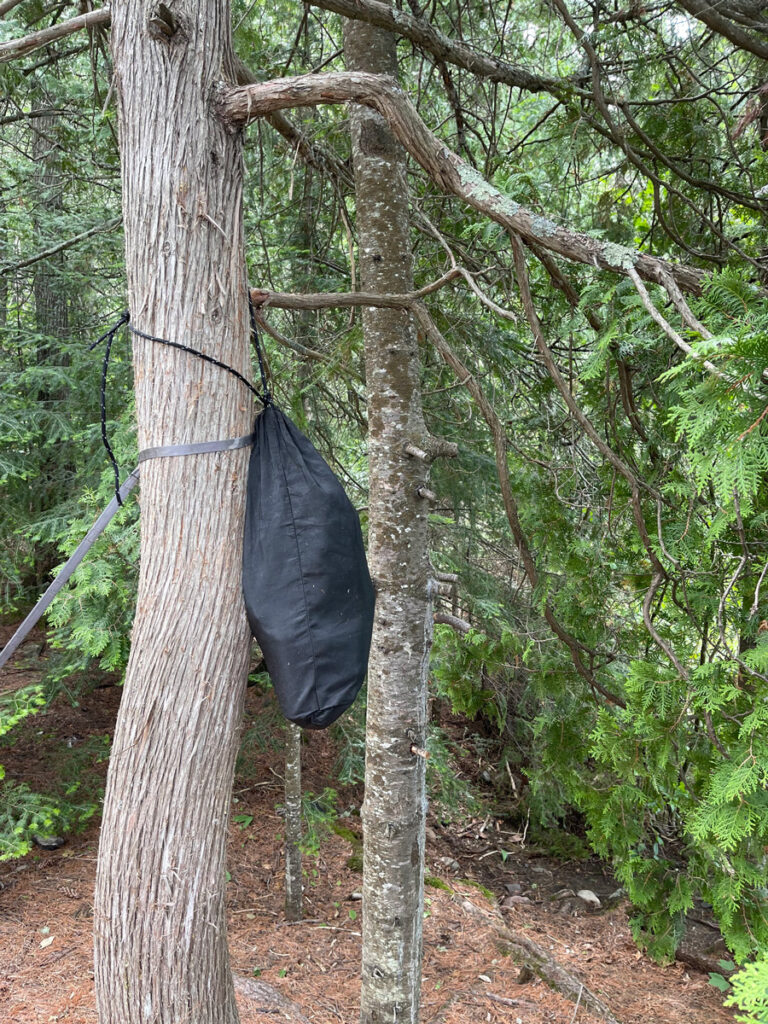
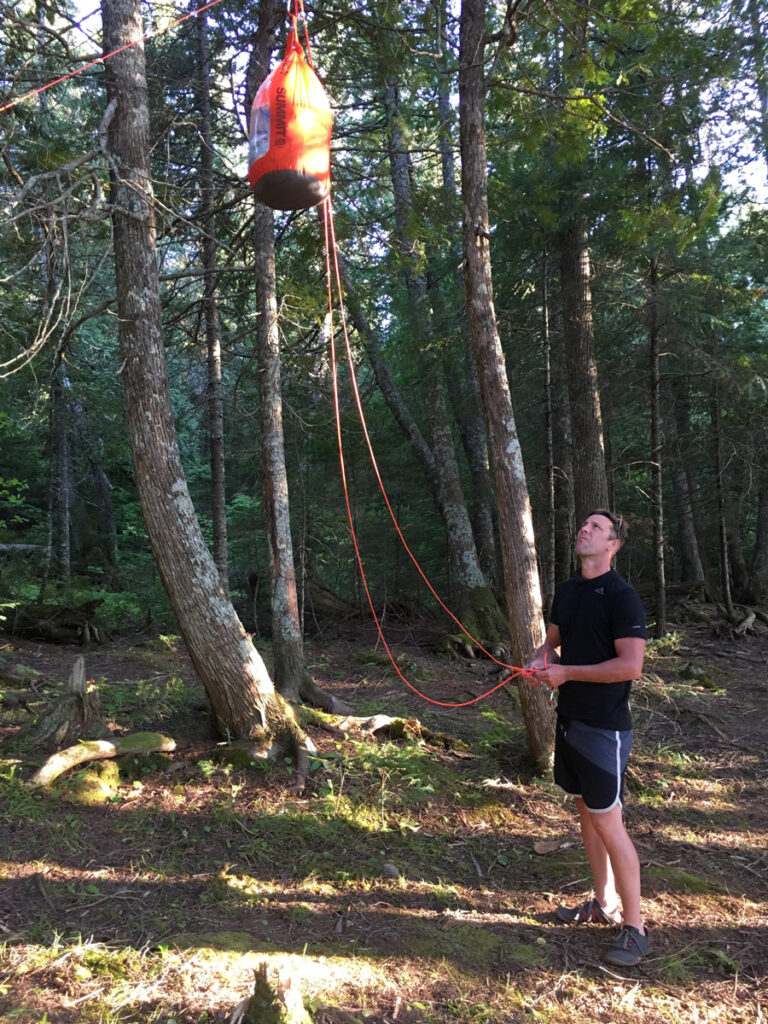
You’ll also find a lot of similarities with what to do in the rare event that you encounter an aggressive wolf. Don’t run. Remain calm and confident, while clapping or making noise. Don’t turn your back to the wolf, but move away slowly, and stand your ground. If necessary, you can use bear spray or climb a tree. And as with bear encounters, it’s always a good idea to report your interaction to the land manager who oversees the area.
If you’ve read this far and read the article on bears, you should feel more confident about your safety as it pertains to wildlife in the arrowhead region of Minnesota—especially as it pertains to wolves and bears. But what about other creatures that can wreak havoc on Northwoods camping trips?
More wildlife safety tips for Northeastern Minnesota
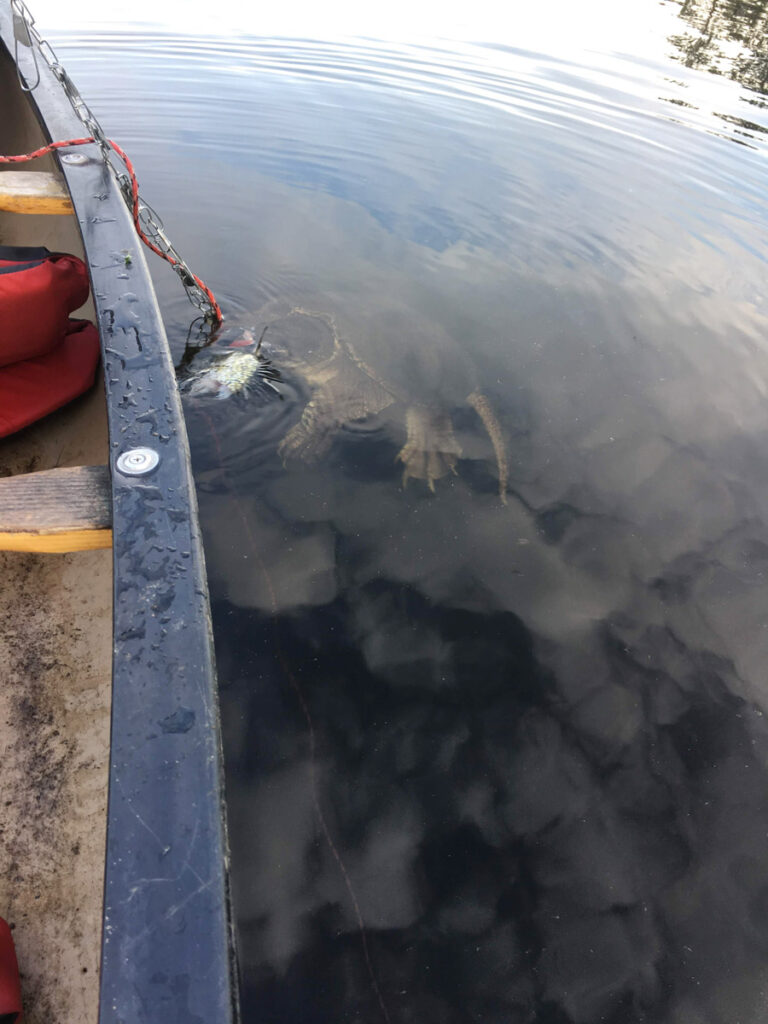
“Jer, come here! Quick!” I yelled to my husband from the shore of our pine-filled campsite on Hustler Lake in the BWCAW. Judging by how quickly he ran to where I was standing, he surely sensed the panic in my voice. We had just gone fishing and left our catch on a stringer while we unloaded and got settled into camp. I stepped away for a moment and when I came back, a giant snapping turtle with a head as big as a softball was attempting to make off with what we hoped would be our dinner. He had no fear and was determined to enjoy a free lunch. He eventually gave up, having only chomped down one of our fish. We spent the afternoon sitting by the water, reading, and guarding our dinner. About every half hour he’d circle back and pop his head up to see if we were still there.
Anyone who has fished and camped in Northeastern Minnesota has probably lost a few fish to a crafty snapping turtle. The best thing to do if you want to eat your catch is to clean them right away. Since we’re usually fishing in the backcountry and don’t have access to a cooler, we try to fish around meal times.
The night before, on Lac La Croix, we battled other camp thieves who were determined to get a bite of our dinner. After enjoying a perfect sunset from our campsite atop a small cliff, we grabbed one of our Ursack bear-resistant bags and got ready to make dinner. I saw something scurry by out of the corner of my eye and upon further inspection, I spotted more than half a dozen mice darting around the fire grate and seating area. We spent the evening shoeing them away as we tried to enjoy our dinner.
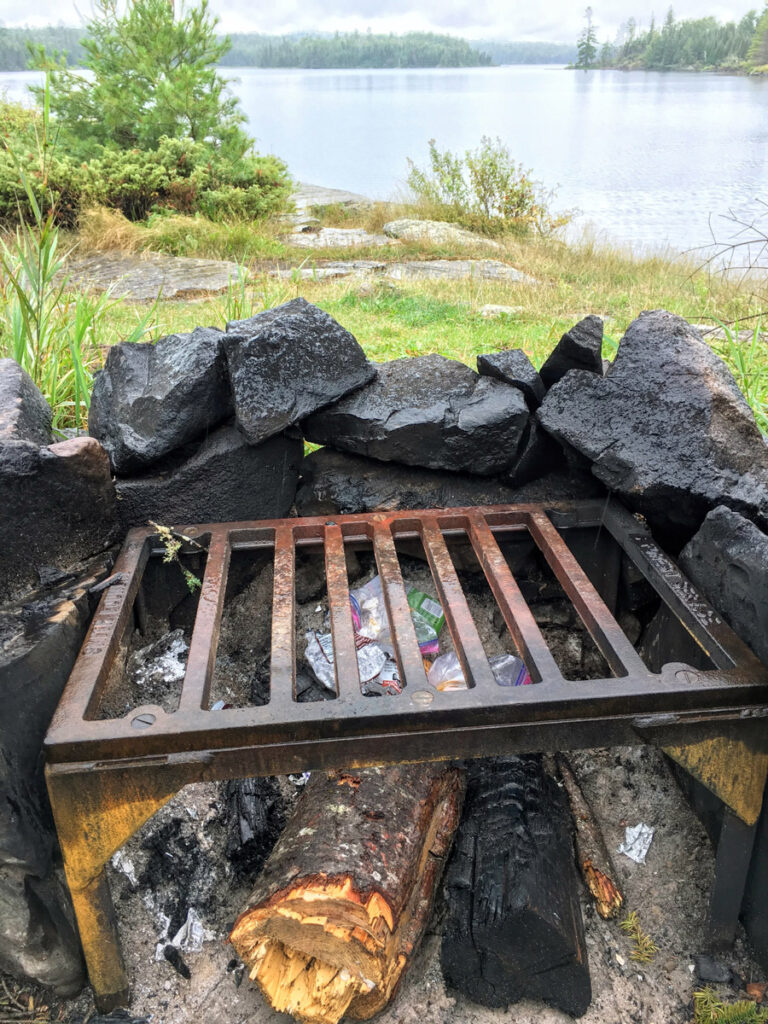
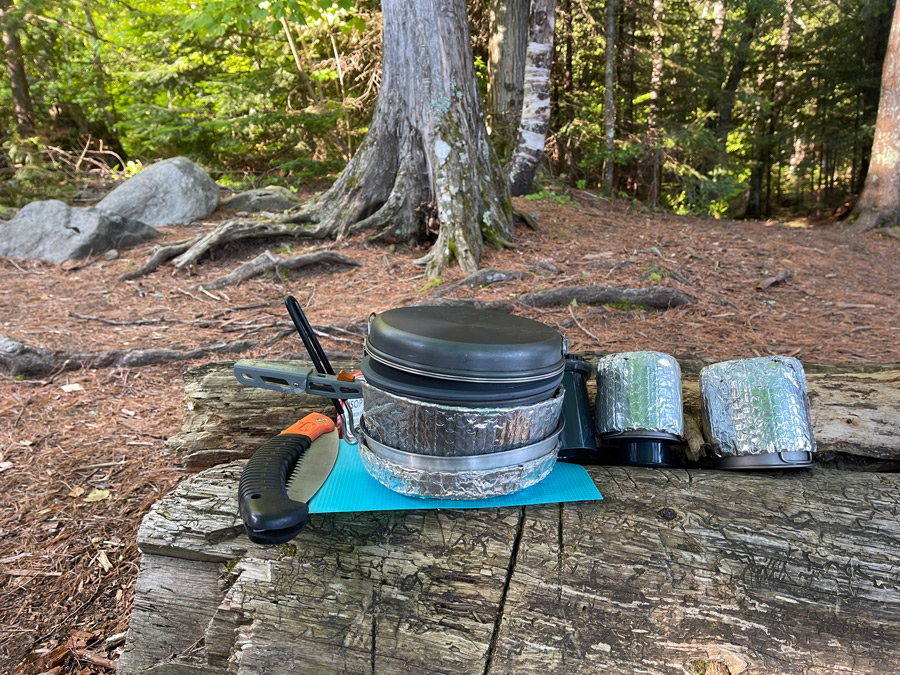
The mouse drama didn’t stop there. After we loaded the canoe at the end of our trip, I opened the car door where I had a bag of clean clothes to change into for the drive home. That’s odd, I thought, as I inspected the dried cranberry placed perfectly in the center of my clean pants. Then I remembered that I’d put a bag of trail mix in the bottom of the bag to snack on during our drive home. I removed the clothing, piece by piece as an occasional nut or dried berry fell to the ground. “Seriously?” I whined to my husband. “Mice broke into our car.”
While all of my rodent drama has been with mice and rats, squirrels and chipmunks can be just as troubling. So here are more wildlife safety tips to consider while traveling in the arrowhead region of Minnesota.
Many of the rules are the same as what I covered with bears and wolves. Keep a clean camp, secure your food and trash, pack out leftovers, and don’t burn trash. I didn’t mention this about bears and wolves because I feel like it goes without saying, but never ever feed wildlife. It might make a cute picture to have a chipmunk eating out of your hand, but this could end badly for both you and the chipmunk. Principle 6 of Leave No Trace is to Respect Wildlife. This includes giving them distance, securing your food, and never feeding wildlife.
In addition to everything mentioned above, if I ever have food in my vehicle that is not going directly from the store to my home, I always store it in plastic totes. It helps keep pests out of your car by minimizing the scent of the food and ensures you’ll have snacks for your long drive home.
As I wrote in the article about bear safety, we are guests in the homes of these wild creatures. While having to defend your dinner from an ancient snapping turtle or army of mice is no doubt irritating, they belong there as much as we do. By practicing good wilderness ethics, we not only ensure our safety, but the safety of the wildlife, as well as other users of our wonderful Minnesota public lands.
More information:
Learn more about wolves in Minnesota
Learn more about wolf management in Minnesota
Know the 7 Principles of Leave No Trace

Holly Scherer is a Minnesota-based writer, photographer, outdoorswoman, and guide. She’s most at home in the great outdoors; camping, hiking, paddling, cycling, and gardening. When she’s not on an adventure, she and her husband live in the Twin Cities where they’re fond of saying, “home is where we store our outdoor gear.”

